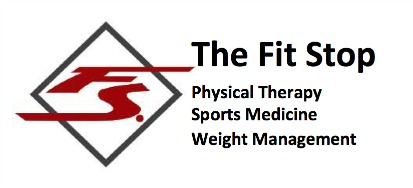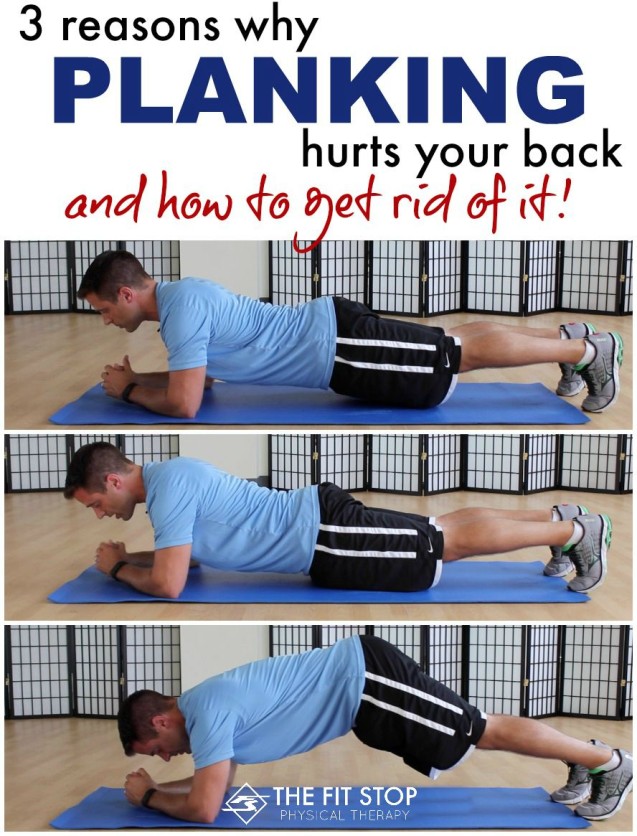Why does planking hurt my back?
“That hurts my lower back.”
“It kind of feels like pinching right here.”
“How come that one hurts my back?”
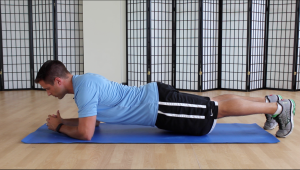 Reason #1: Pelvis tilted too far forward (arched back): I would say that 95% of the time this one is the cause of back pain while planking. When people get down into a plank position, most of them align everything properly (shoulders – hips – knees should be a straight line), but the common tendency is to let your stomach sag towards the ground. This creates a significant arch in your lower back and people complain of a “pinching” in their lower spine. In this position you’re relying primarily on your back vertebrae and spinal ligaments for support rather than the core muscles which should be holding you up. Buy dapoxetine
Reason #1: Pelvis tilted too far forward (arched back): I would say that 95% of the time this one is the cause of back pain while planking. When people get down into a plank position, most of them align everything properly (shoulders – hips – knees should be a straight line), but the common tendency is to let your stomach sag towards the ground. This creates a significant arch in your lower back and people complain of a “pinching” in their lower spine. In this position you’re relying primarily on your back vertebrae and spinal ligaments for support rather than the core muscles which should be holding you up. Buy dapoxetine
The solution: Concentrate on keeping your back in a “flat” or “neutral” position. Engage your quads, butt, and abs to “tilt” or “roll” your pelvis backwards thereby flattening your back out and eliminating the pinch-inflicting arch.
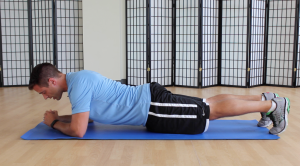 Reason #2: Hips too low to the ground (rounded back): The second-most common error I see in people who plank is that they let their pelvis drop too much towards the floor. In a correct plank your shoulders, hips, and knees should create a nice straight line. In this error people will let their hips and knees fall below their shoulder line creating a “rounded” back down towards the ground.
Reason #2: Hips too low to the ground (rounded back): The second-most common error I see in people who plank is that they let their pelvis drop too much towards the floor. In a correct plank your shoulders, hips, and knees should create a nice straight line. In this error people will let their hips and knees fall below their shoulder line creating a “rounded” back down towards the ground.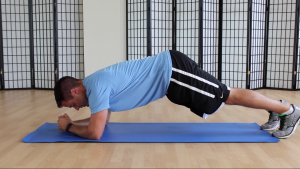 Reason #3: Hips too high (butt in the air or “pike” plank): The last common problem I see is when the butt/hips are way above what should be the straight shoulder line. This is especially a common problem when fatigue starts to set in. This ultimately results in a lot of force being placed on the shoulders and neck and is often compounded when people try to look up/forward during the plank. Usually this posture results in neck and upper shoulder pain, but can also result in some lower back aggravation as well.
Reason #3: Hips too high (butt in the air or “pike” plank): The last common problem I see is when the butt/hips are way above what should be the straight shoulder line. This is especially a common problem when fatigue starts to set in. This ultimately results in a lot of force being placed on the shoulders and neck and is often compounded when people try to look up/forward during the plank. Usually this posture results in neck and upper shoulder pain, but can also result in some lower back aggravation as well.When done correctly, planks are one of the most effective abdominal exercises you can do. Check out your form and incorporate some of these suggestions to return to full, pain-free planking!
We often recommend planks to help lumbar/core stabilization. This is one of the most-effective exercises you can do to help with back pain where strength training is indicated. If you have any questions about your back pain or exercises you can perform to stabilize your spine we would love to help you out! Contact us at one of our four convenient locations to ask questions water pills over the counter or set up a physical therapy evaluation:
Heber City Salt Lake Farmington Murray
Jared Beckstrand, PT, DPT
Fit Stop Physical Therapy – Farmington
172 N East Promontory Ste 200
Farmington, UT 84025
(801) 558-8612
